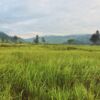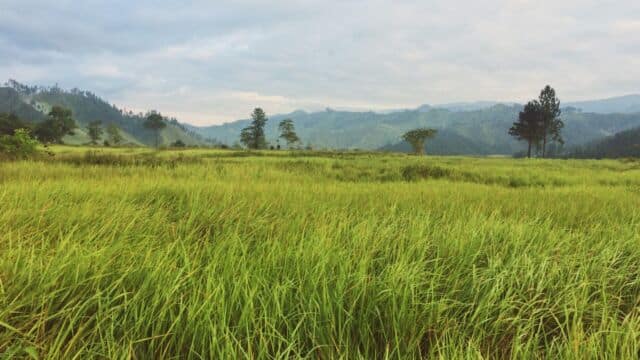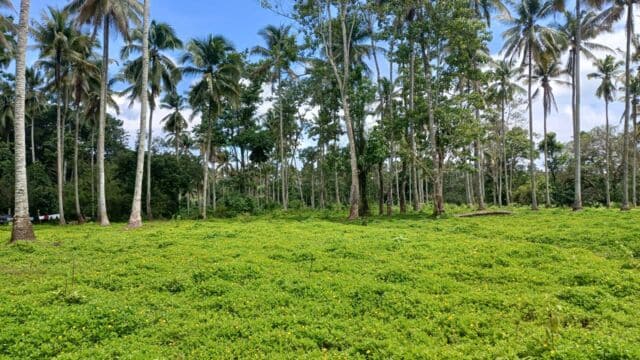Mass Tourism is Fencing Off the Island I Call Home
Photo: Liberty Giganto.
Santa Fe, Bantayan | 2,566 words
Translated from Cebuano by Merlie Alunan and John Bengan
Poblacion
“Let’s go to the beach,” I say to Lydlyd, my friend and volleyball teammate, after our scheduled game fell through. In the past, when plans didn’t work out, the beach was always here to save our day.
I get off the motorbike quickly after we ease into a parking lot near the beachfront at Poblacion. We find a path that leads directly to the shore. There are still a few remaining entryways for locals like us.
The sight of the water lends urgency to my steps. The ocean is drawing me in like a huge vortex, going to swallow me with its tremendous power. But our views of the beach and sea are suddenly limited by two fences.
One fence belongs to a mid-priced beach resort, the other to a group of eateries called “The Hungry Beach Co.” The old shacks and lean-tos that sold snacks and beer, built out of slivered pieces of bamboo, tarpaulin sheets, and discarded posters with pictures of candidates defeated in the last election, are gone. Instead you can eat tuslob-buwà, burgers and fries, fried chicken, pizza, pad thai. Foodstuffs that have become quite at home on this island, when they used to be available only in mainland Cebu or the city. I can’t help noticing slender, waist-high poles anchoring two thin ropes, announcing the territorial boundaries of The Hungry Beach. The poles are stuck in the sand around concrete walls. This place has been claimed, owned, fenced off.
Lydlyd has been in the city preparing for board exams, while I’ve come back after teaching at a college in mainland Cebu. These last few years, while we were elsewhere, others have arrived and settled this beach in our place. The town of Santa Fe and island of Bantayan have become famous all over the Philippines, and now their fame is spreading across the world—the beautiful beaches, the dried fish, the Santo Intierro procession during Holy Week. Every year tourists come in droves. But as the island has opened more of itself to visitors, the people living here are losing their own spaces.
My feet sink into the soft sand, and I wait for Lydlyd to catch up with me. There’s finally nothing to block the view. The tide is low. We can see in the distance the gentle rise of the famous sandbars, lots of small kids playing, spread all over the sand, and bathers soaking themselves in waist-high water. I buy takeaway coffee from the first store I see. This is not the usual “3-in-1” coffee familiar to islanders, or our local “charred” brew. This is another amenity that didn’t exist here before. While waiting for the coffee, I peer at a stall beside the coffee place—Ate Jen’s former spot, that I used to frequent. I send her a text message: “Te, I’m here at the beach. Where’s your stall?” Soon, I receive a reply. “We’re not there anymore. I sell food on Facebook now.”
“Really, Te?” I respond. “Then I don’t have a place where I can hang out anymore.”
When we get our coffee, I suggest to Lydlyd that we walk along the shore. As we do so we look inland and see a huge structure standing smack in the middle of a road that leads to a school: a half-built watch tower.
“Why put up such a building in the middle of the road,” Lydlyd asks, our minds meeting like a wave hitting sand.
In front of a resort several tourists are lazing on banana lounges. Another fenced lot lies beside it where one has to pay a fee to enter: three groups of drinking buddies sit inside. Further ahead, as we walk to the sandbars (it’s easier to walk on them than on the soft sand further up the beach) I can see the long neck of a backhoe through makeshift barriers of galvanized iron and corrugated tin, and hear the roar of machines and clatter of building materials. A huge construction project is underway after a previous councilor, a native of the town, sold a property to someone not from the island.
When Lydlyd and I were in high school, the beach, which was practically at the back of our school yard, was inseparable from our lives. We ate our packed lunches there, we read through and rehearsed short plays there. These things, I suppose, students now will have trouble doing: I see another structure—a twin of the half-built tower—also blocking the school’s path to the beach. That dirt path is the easiest access to the beach from the town center, too.
Incrementally, enhancements to the pier and a widening of roads began changing the town. I saw how those roads nonetheless grew clogged with traffic. Buses appeared, along with large trucks and cars. Spaces became too small for everyone. The new arrivals to the island were the reason why, when I was a kid, my elders didn’t let me ride my bicycle on many roads. “You can’t ride your bike,” I’d hear them say, “or you’ll get run over by those monster trucks.”
Lydlyd and I pass the Bantayan, the antique and historically-significant fort known on the island as Kota. This ancient structure was a sanctuary for the islanders of old, their protection against Moro pirates. It was their defense, keeping their community safe from marauders. Now it’s almost impossible to visit. To its left is a resort, to its right a beach house whose front has a sign planted in soft earth: “Private Property. No Trespassing”. To my mind, the Kota is now irreversibly conquered, captured.
A question keeps turning in my mind: Will a time come when we locals can’t go to the beach anymore and dip in the sea for free? All this has come gradually but unstoppably, like waves steadily altering the shape of a shoreline.
Lydlyd and I have reached as far as we can go. A crowd of tourists lounging on deck chairs and hanging out at a bar of another resort—the owner built an embankment that has eaten up a large area of the bay—blocks our path.
“Let’s go back,” says Lydlyd. “We can’t pass through that.”
“Yes,” I say. “This is as far as we can go.”
Okoy
The fencing-off of Poblacion is also starting to happen in other places. Businessmen from outside are likewise eyeing my family’s barangay, which also faces the coast, but sits about two kilometers from the center of town.
I remember waking up in our house some years ago to strange sounds. They came from a neighboring coconut grove which we always passed on our way to our favorite beachside playground. There was a woman there with a tall, white-haired foreigner. They were all over the grove, surveying it, looking over the space. To one side were men digging little holes in the ground, piles of gravel, sacks of cement and some rebars. They were building a fence around the coconut grove. From our window afterwards, our view of the sea, seen through rows of coconut trees, disappeared. It was replaced by a tall, naked wall of concrete cutting off the crowns of coconut trees from their trunks so that they looked like the mythological creature known as the manananggal, all flying heads without torsos. We began to feel that our home had become stuffy and cramped.
Because of this wall, the footpath we used to tread when going to and from the beach became impassable.
Okoy used to be a part of town, unlike Poblacion, that tried to resist aggressive commercialization and privatization. Barbed wire fences installed by newcomers were cut down. But these days, the common folk in Okoy — fishermen most of all, who need to get to sea — are forced to look for other ways to get to the water. We carve out new routes that are longer and longer, heading in roundabout directions, and those new paths are narrow and cramped. If you meet a fisherman on the way, carrying his box of kitang (fishing gear made of hundreds of meters of nylon strung with hooks), you make way for him either by standing as close to the edge of the path as possible, pressing yourself against trees or walls of houses, or by crawling under his gear.
At dawn, when I was a kid in Okoy, we would run to meet the fishermen as they arrived back from the sea. Older folks also came to meet the boats, and fishmongers who brought with them scales to weigh the catch, and we would all watch happily as the scales swung with the weight of fish. The beach was the promise of safe return after each journey those boats took out to sea. There was no other place those boats could return to but our shore.
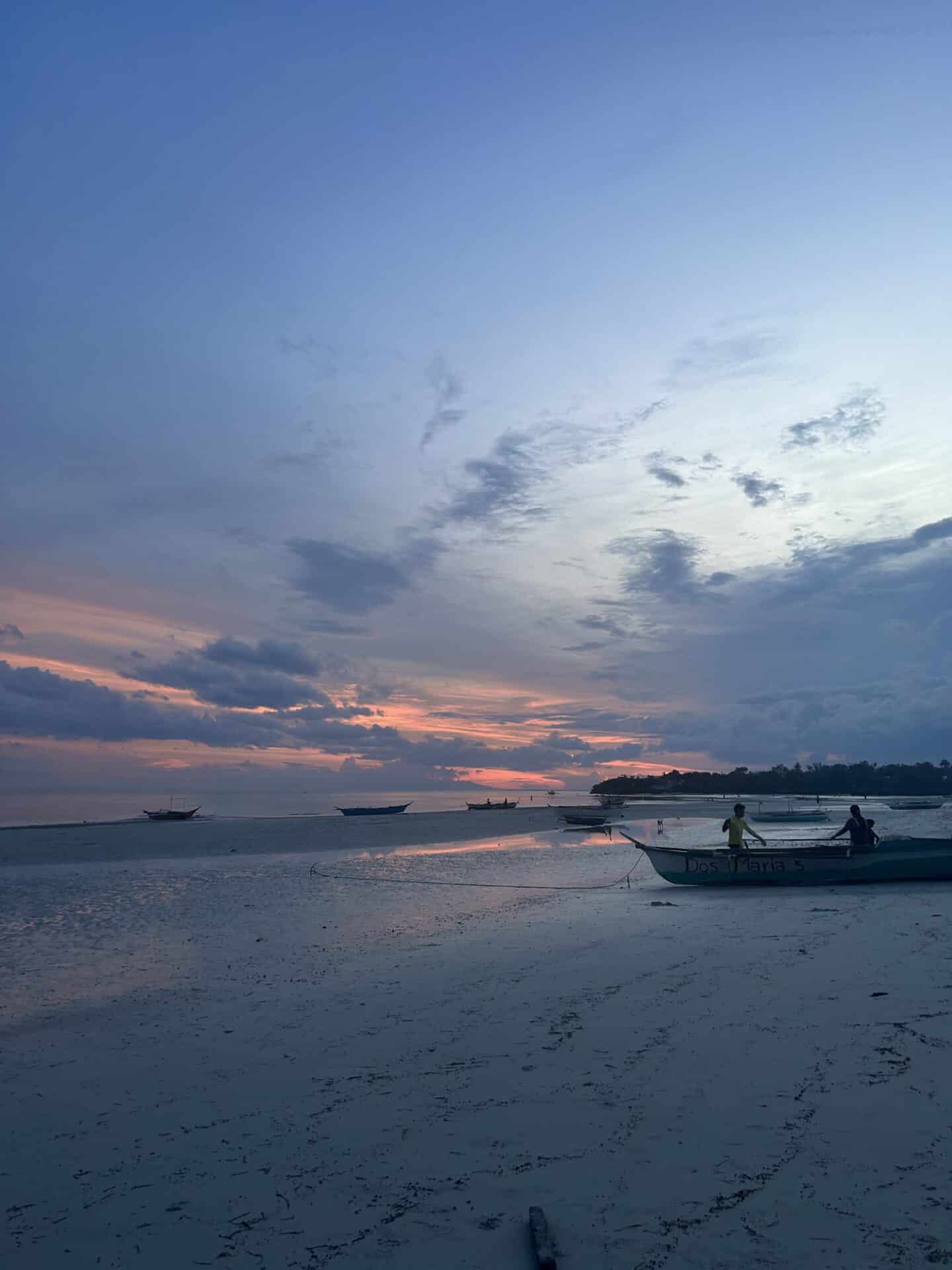
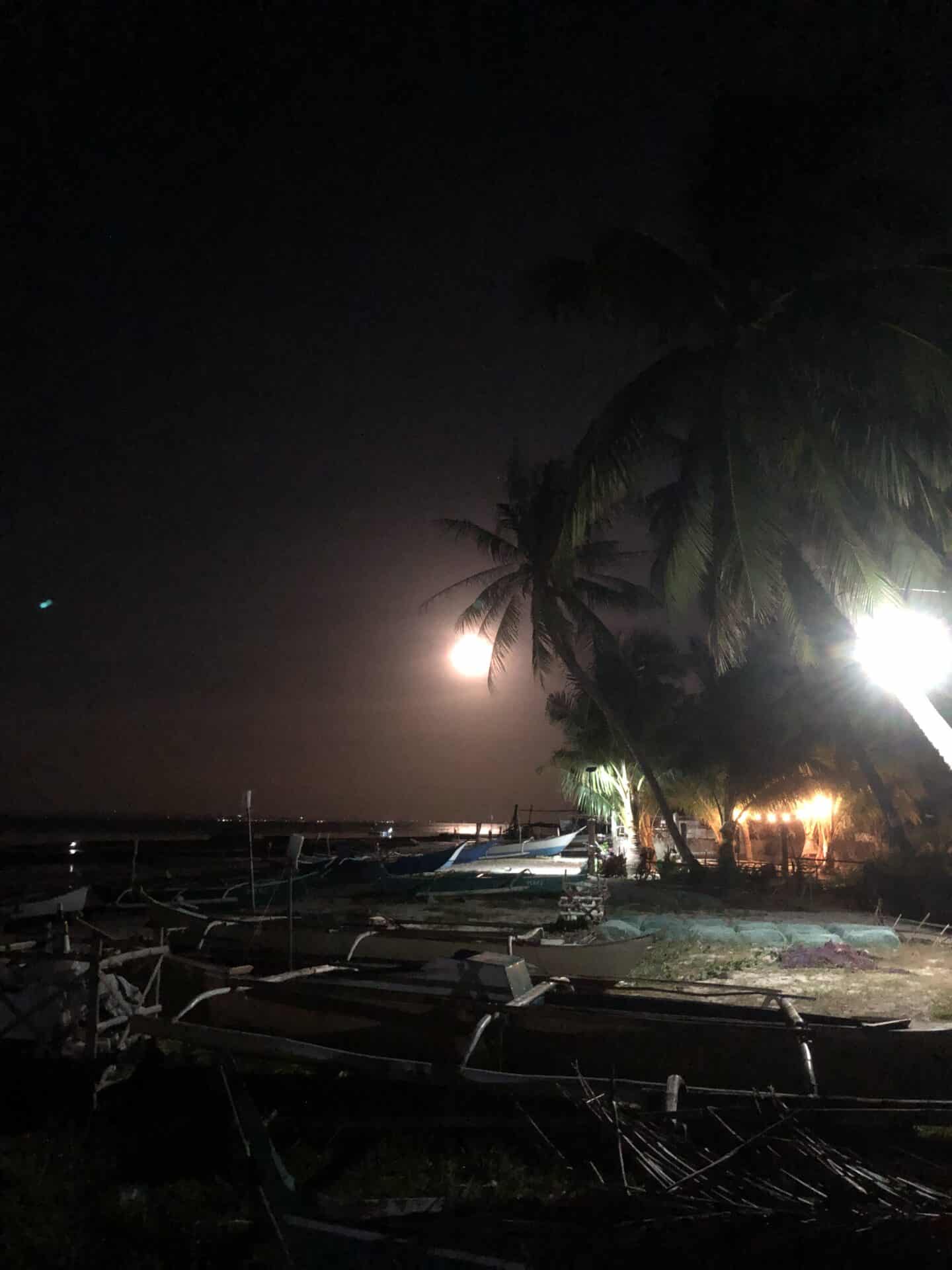
Each time the fishing boats docked, I would learn about sharing space. While the fishermen were busy mending their nets and fixing holes in their boats, we kids tumbled around in the loose white sand right beside them. To my young self, the boats were a place not just of simple play but a place for yearning. While their bows became our diving platform I — a child of a tricycle driver — dreamed of steering a boat to map the waters around my island. It seemed to be part of the fisherfolks’ gratitude at their good catch and safe return when they would hand over some fish to us, saying, “Here, roast this.” Children, old folks, people in their prime: everyone had a right to a place in that beach of our yesteryears.
Only a few days ago in Sitio Tugas, we noticed small boats and pump boats crowding each other on one side of the beach, while the other side, near a rental beach house painted white and protected by a fence, was empty. The owner, folks say, will not allow any boats to stay there. It’s like the beach itself is private property. The fishermen obey this edict. Two resorts have risen here, their beachfront likewise free of vessels. Still-further along, more huge and mostly-empty vacation houses have sprung up, and the houses of former classmates and acquaintances have been torn down.
So much that is new has come to our beaches, to our island. So many people have gone, or felt the need to leave the neighborhoods near the beach. Many of the fishermen and their families have gone to ilaya — the hillsides. It is painful to watch them hauling their huge and unwieldy kitang, that in their boats take up almost the entire space, on their backs as they travel all the way from the hills to the sea. Most of the people who used to live by the beach don’t hold land titles. Those who do have sold their properties to new owners, driving their families to relocate.
*
We are having a small family gathering to celebrate the completion of my graduate studies at our house in Barangay Okoy. We could have dined out, but for my parents, especially my mother who has taken ill, going out and having to compete with the throng of tourists has become a hassle. When the visitors come in droves, finding parking space in Poblacion is nearly impossible. Finally, I send a message to Ate Jen, inviting her to come over — she was the first seller that came to my mind. I bought several boxes of pizza from her. A chance to see her again after a long time.
Ate Jen arrives at our house along with her daughter. After I invite her to join us, she tells me she’s just here to deliver food. But I want to grab the opportunity for conversation. We speak in a corner of our terrace, while people inside the house eat and drink.
“What happened to your food stall, Te?” I ask her.
“I was losing,” Ate Jen says. “I couldn’t afford the rent.”
One can’t help taking notice of Ate Jen. Aside from her innate graciousness to her customers and her welcoming ways, it’s hard to ignore her physique—buxom, her skin fair and freckled, her hair a shade of brunette, with brown eyes. Ate Jen obviously has foreign blood in her.
Ate Jen’s looks are common enough here. Several islanders have gotten married to foreigners and had children by them. In a place where tourism is big, the chances of a foreigner falling in love with an islander and marrying one are as wide as the ocean itself. The affairs of island women with foreigners seldom end in happy ever-afters, though. Most relationships don’t last long, coming to an end when one has taken what he or she wants from the other. The belief, though, clings like a barnacle in peoples’ minds that a relationship with a foreigner is a sure means to save oneself from the difficulties of living.
But while she may look like a foreigner, and indeed could be mistaken for one of the tourists, Ate Jen speaks the tongue of the island, and has the heart of an islander.
“So, you won’t get another stall at the beach?” I ask. Last time I saw her in her old place was Holy Week last year, on Black Saturday: I even took a beer from her with an IOU, which I won’t be able to do with the new storeowners. “I won’t have anyone to watch over my stuff when I take a dip,” I say.
“You’ll have to learn to trust the new owners,” she says.
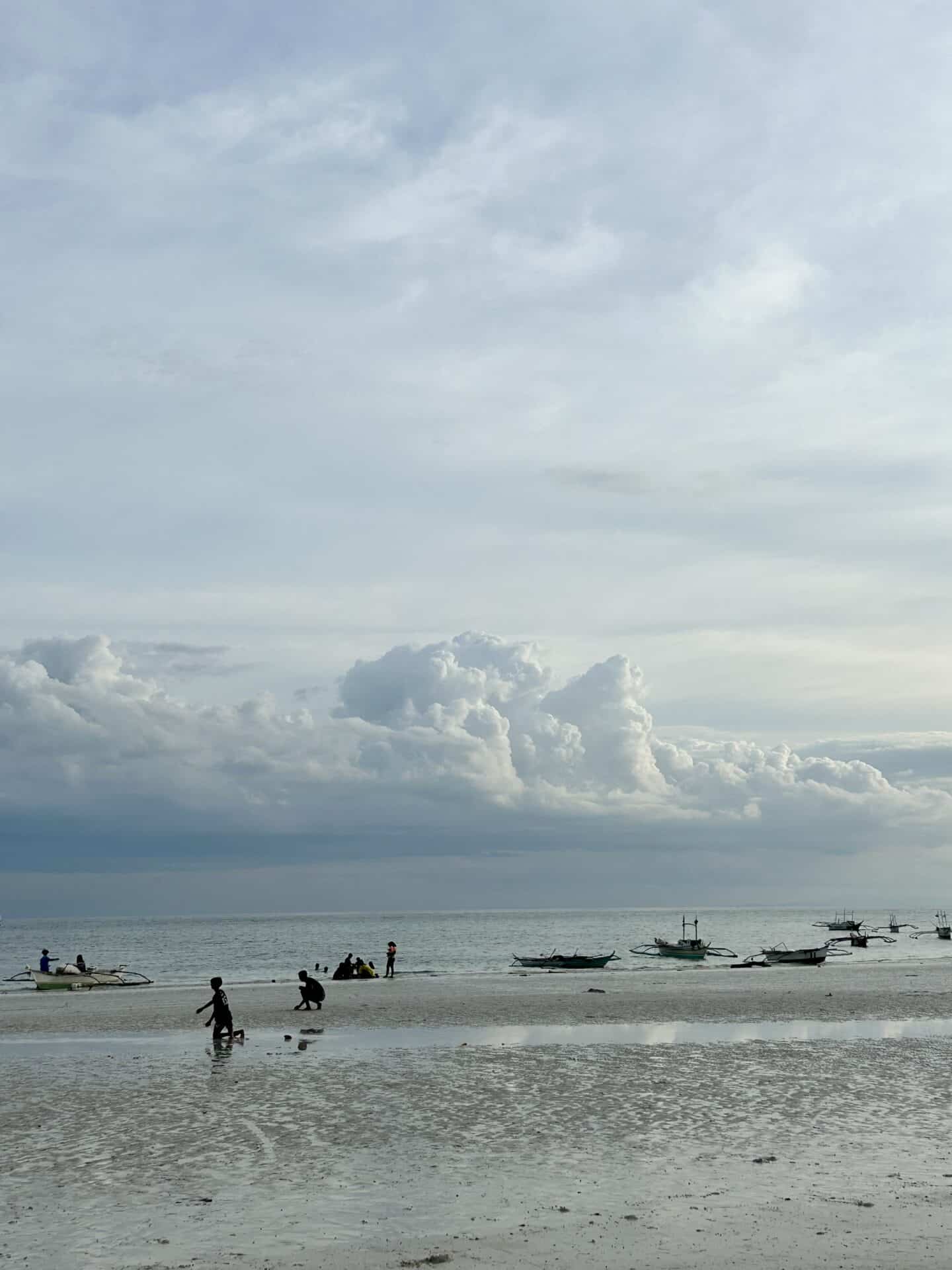
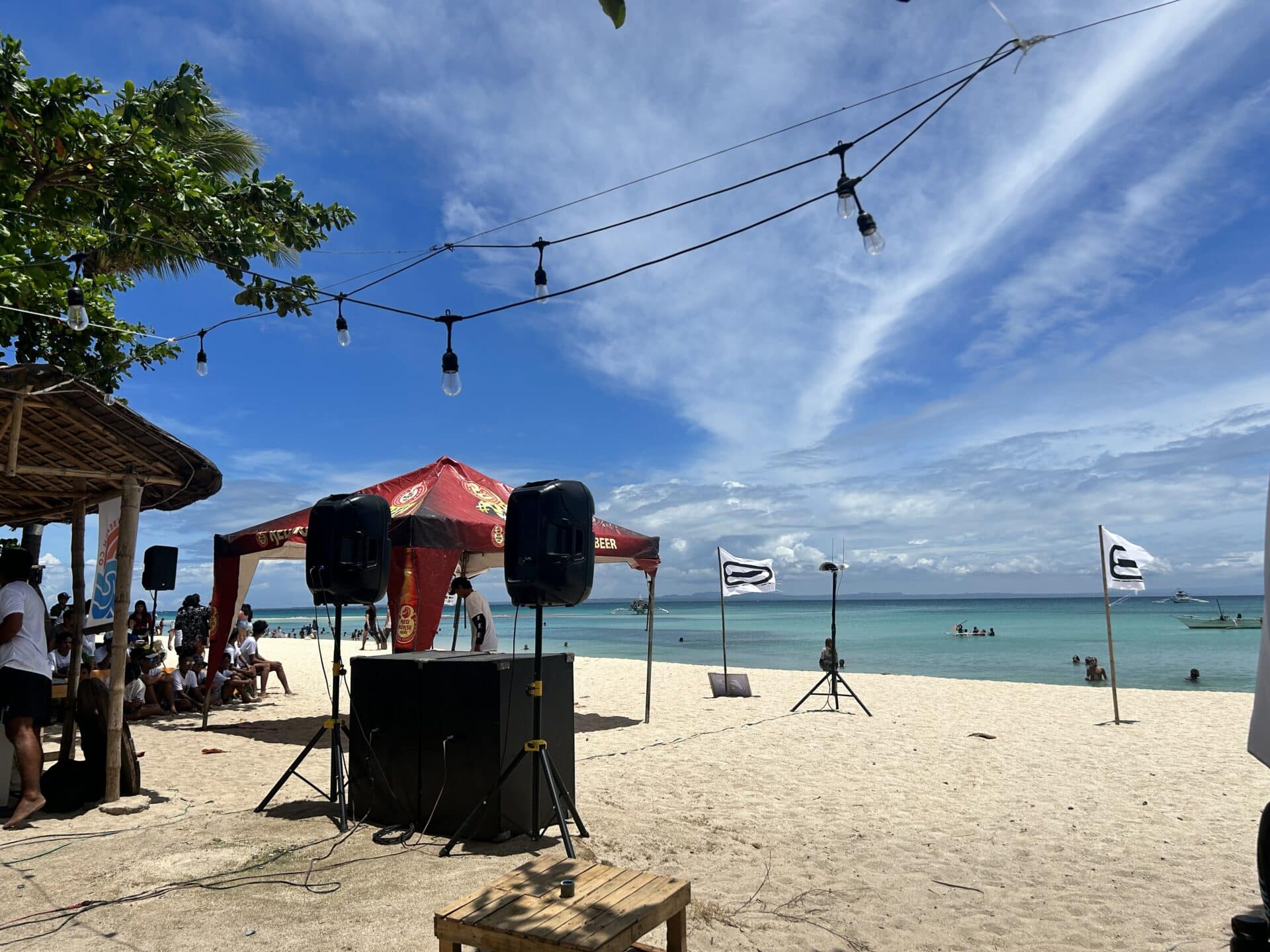
But trust has been lost among the locals. We can no longer leave personal effects on the beach for fear that other hands will help themselves. Since the sellers at the stalls are no longer familiar to us, we dare not ask if we can leave our things with them when we go for a dip. The old ways of the island are disappearing like a wind.
After laughter and sharing a series of jokes, after a long conversation recalling our happy times, Ate Jen’s face falls and her eyes darken, and I hear her voice breaking.
“Small businesses do not stand a chance in our place,” she says. And I know hers is only one of the faces in town whose lives had been changed profoundly.
Ate Jen tells me she can no longer stay; I cannot keep her anymore.
“Let’s meet again, Te,” I say to her.
I hug her tight, and she leaves me with the words, “Let’s meet again soon.”
As I say goodbye, I conjure in my mind her little store by the beach. Only in my mind, in my memory, along with images of the beach of my childhood: a stretch of sand untouched by wire fences, its shore teeming with boats, children playing freely, and fishermen hard at work.
Might this new influx onto the island not be like the previous ones, people who came to get what they wanted, took advantage, then left without a thought? Tourism can give more than economic growth: it should also include respect and concern for islanders. When the waves of the sea bring in tourists and big business to Santa Fe, may it not dislodge we islanders and cast us adrift to other shores. May we be able to walk freely on the shores and beaches which have always been part of our lives.
© Jessrel Gilbuena
English translation © Merlie Alunan and John Bengan
Commissioning editor: John Bengan



